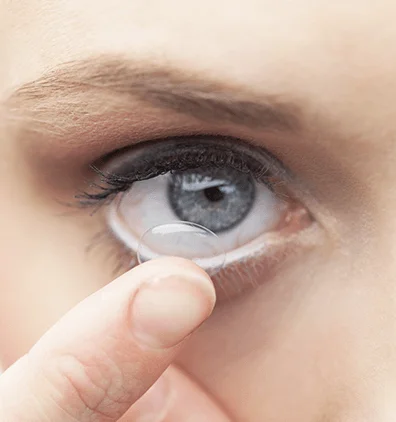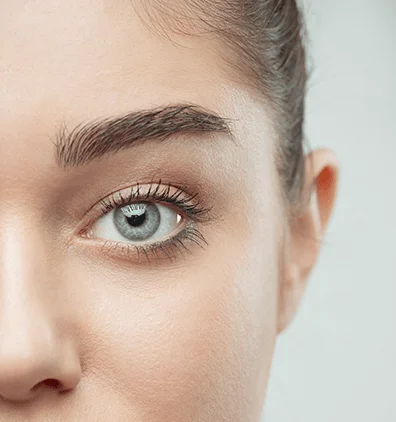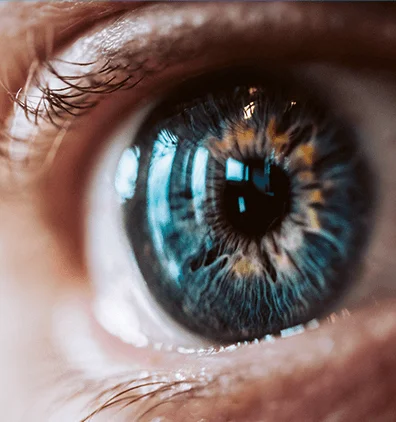Amblyopia Treatment
Amblyopia ("Lazy" Eye) in Adults: Key Symptoms & Treatment Options
Amblyopia, commonly referred to as “lazy eye,” is not just a childhood condition—it can also persist into adulthood if untreated. It occurs when the brain favors one eye, leading to reduced vision in the other. Unlike typical vision issues, amblyopia is rooted in how the brain processes visual input, and it cannot be fully corrected with glasses or contact lenses alone. Fortunately, advancements in treatment are providing more options, including cutting-edge laser surgery, to significantly improve vision in adults with amblyopia.
Symptoms of Adult Amblyopia
Many adults with amblyopia may not even realize they have the condition because it typically starts during childhood and becomes the “normal” way of seeing. However, some key symptoms to watch for include:
- Poor Depth Perception: Difficulty perceiving depth can make everyday activities like driving or sports challenging.
- Blurry Vision in One Eye: One eye may have noticeably weaker vision, which does not improve with corrective lenses.
- Eye Misalignment: In some cases, the affected eye may appear to drift inward or outward, indicating a lack of coordination.
- Eyestrain and Headaches: Adults with amblyopia often experience eye fatigue and headaches as their brain struggles to merge the visual information from both eyes.
Early diagnosis, even in adulthood, is essential for effective treatment. Recognizing the symptoms and seeking professional help can prevent further deterioration and improve quality of life.
What Causes Amblyopia in Adults?
Dr. Chynn of Park Avenue LASEK explains that the causes of amblyopia in adults are primarily linked to issues that originated in childhood. These include:
- Strabismic Amblyopia: This occurs when the eyes are misaligned (strabismus). To prevent double vision, the brain suppresses the visual input from the misaligned eye, leading to permanent vision loss if untreated.
- Refractive Amblyopia: This type of amblyopia arises when there is a significant difference in refractive errors between the eyes. If one eye is much more nearsighted or farsighted, the brain will prefer the eye with clearer vision, neglecting the other.
- Visual Deprivation Amblyopia: This occurs when something obstructs vision in one eye, such as a cataract, during critical developmental periods in childhood. Even if the obstruction is later removed, the brain may continue to ignore the weaker eye.
Innovative Treatment Options for Adults
The traditional understanding is that amblyopia must be treated in childhood for effective results. However, recent advancements have made it possible to treat adults with promising outcomes. Dr. Chynn, who exclusively performs LASEK, offers several approaches tailored to adults with amblyopia.
1. HD LASEK: An Effective Solution for Refractive Amblyopia
For adults whose amblyopia is caused by a significant difference in prescription between the eyes, HD LASEK offers a cutting-edge solution. Unlike LASIK, which involves cutting a flap in the cornea, LASEK is a no-cut procedure that preserves more corneal tissue and reduces risks.
- How It Works: HD LASEK corrects the refractive error in the weaker eye, eliminating the discrepancy between the two eyes. By balancing the prescriptions, the brain receives equally clear images from both eyes, which helps to re-engage the “lazy” eye and improve overall vision.
- Advantages: Unlike patching or atropine drops, which are often used in childhood, LASEK provides a permanent correction. It also avoids the risks associated with LASIK, particularly in patients with high prescriptions or thinner corneas.
- Real-Life Benefits: Many adults treated with HD LASEK have reported improved vision that significantly enhances their daily activities, from reading to playing sports. This treatment is especially beneficial for those who want to avoid the use of glasses or contact lenses.
2. Patching and Penalization Therapies
While these methods are more commonly used in children, they can also be employed for adults in specific circumstances. Patching involves covering the stronger eye, thereby forcing the brain to use the weaker one. Atropine drops work similarly by blurring the vision in the stronger eye to stimulate the weaker eye.
However, these approaches are generally less effective in adults compared to surgical options, and patient compliance can be an issue. They are typically recommended in combination with other treatments to maximize results.
Why Choose LASEK Over LASIK for Amblyopia?
Dr. Chynn explains that LASEK is the superior choice for amblyopic patients, particularly adults, due to its safety and effectiveness in treating extreme prescriptions. Unlike LASIK, which involves creating a flap, LASEK avoids cutting into the cornea, making it suitable for patients with thin corneas or those at risk of complications from LASIK.
- No-Cut Procedure: The LASEK approach preserves more corneal tissue, which is crucial for patients with high or uneven prescriptions.
- Fewer Complications: For adults who may have other underlying eye conditions, LASEK minimizes the risk of complications such as dry eye, flap dislocation, or corneal scarring.
- Enhanced Results for Extreme Prescriptions: LASIK is not always effective for severe cases of refractive amblyopia. Dr. Chynn emphasizes that LASEK allows for more precise correction, providing better visual outcomes for patients with extreme nearsightedness or farsightedness.
Setting Realistic Expectations
While significant improvements are possible, it’s important for adults with amblyopia to have realistic expectations. The goal of treatment is often to enhance the vision in the weaker eye to a level where both eyes can work more harmoniously, improving depth perception and reducing dependence on corrective lenses.
Complete correction may not be achievable in all cases, especially if the amblyopia is severe or has been present for many years. However, even modest improvements can make a noticeable difference in daily life, reducing eyestrain and improving visual comfort.
Why Aren't More Surgeons Offering LASEK for Amblyopia?
Dr. Chynn is currently one of the few surgeons in the U.S. performing LASEK exclusively, and the only one focusing on its application for amblyopia. The reason is tied to the popularity of LASIK, which is the procedure most refractive surgeons are familiar with. However, LASIK has limitations when it comes to treating amblyopia, particularly in adults.
- LASIK’s Limitations: LASIK requires cutting a corneal flap, which can lead to complications if the patient rubs their eyes during recovery—a particular risk for younger patients or those with amblyopia-related discomfort.
- LASEK’s Niche Application: LASEK’s no-cut technique makes it uniquely suited for adults with amblyopia, especially those with extreme or uneven prescriptions. This procedure allows Dr. Chynn to safely treat patients who would otherwise be unsuitable candidates for refractive surgery.
Our Videos
How To Proceed:


#1 Rated
LASEK, LASIK, PRK, SMILE Eye
Surgery Center in NYC
#1 Rated LASEK, LASIK, PRK, SMILE Eye Surgery Center in NYC
(212) 741-8628

Get Directions to Park Avenue LASEK
102 E 25th St, New York, NY 10010









